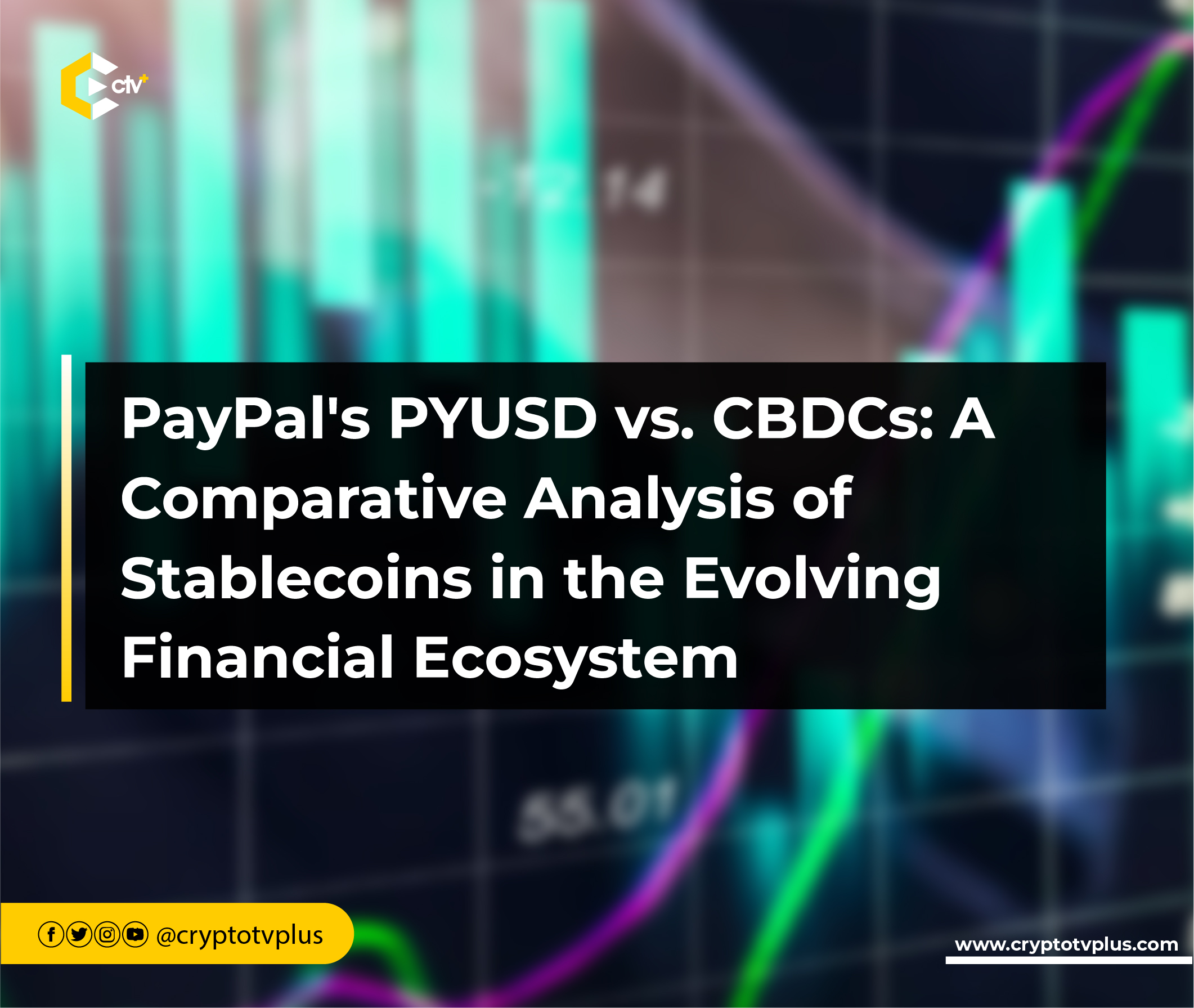Education
PayPal’s PYUSD vs. CBDCs: A Comparative Analysis of Stablecoins in the Evolving Financial Ecosystem

In an era defined by rapid technological advancements and evolving financial landscapes, the convergence of traditional finance and the crypto space, is becoming increasingly evident.
PayPal’s recent introduction of its own stablecoin, PYUSD, signifies a significant milestone in this convergence. However, it’s important to examine how PYUSD stands in relation to another emerging concept: Central Bank Digital Currencies (CBDCs).
Understanding PYUSD: A Corporate Stablecoin Revolution
PYUSD, a stablecoin introduced by PayPal, marks a turning point in corporate attitudes towards stablecoins. Its inception as the first stablecoin issued by a major non-crypto-focused corporation highlights the potential for traditional companies to embrace blockchain technology and the broader crypto space. The features and implications of PYUSD include:
- Stability and Accessibility: PYUSD is fully backed by U.S. dollar deposits, ensuring stability and mitigating the price volatility commonly associated with cryptocurrencies. It can be exchanged seamlessly at a 1:1 ratio for U.S. dollars using PayPal’s platforms, making it easily accessible to PayPal’s massive user base.
- User Adoption: With over 426 million users, PayPal’s integration of PYUSD into its ecosystem introduces millions to the world of cryptocurrencies, potentially accelerating their adoption and familiarity.
- Partnerships and Compliance: The collaboration with Paxos Trust Company shows PayPal’s commitment to regulatory compliance, highlighting the importance of establishing trusted partnerships within the crypto space.
Central Bank Digital Currencies (CBDCs): Reinventing National Currencies
In contrast to PYUSD, CBDCs are digital representations of a country’s national currency issued by its central bank. CBDCs hold the potential to revolutionize the financial system on a national level. Key aspects of CBDCs include:
- Monetary Policy and Control: CBDCs provide central banks with greater control over the money supply and the ability to implement monetary policies more efficiently. This control extends to direct interventions in the economy through programmable features.
- Financial Inclusion: CBDCs have the potential to enhance financial inclusion by providing access to digital payments and banking services to individuals who are currently underserved or excluded from the traditional financial system.
- Interoperability: CBDCs can be designed for seamless interoperability between domestic and international payment systems, potentially reducing transaction costs and enhancing cross-border trade.
PYUSD vs. CBDCs: A Comparative Analysis
- Origins and Backing: While PYUSD is issued by a private corporation and backed by U.S. dollar reserves, CBDCs are backed by the respective country’s central bank and carry the weight of a sovereign entity.
- User Base and Adoption: PYUSD leverages PayPal’s massive user base, enabling widespread exposure to stablecoins. In contrast, CBDCs have the potential to reshape entire national economies and financial systems.
- Control and Governance: CBDCs are subject to the governance and regulatory frameworks of their issuing countries, while PYUSD’s governance is influenced by PayPal’s policies and partnership agreements.
- Cross-Border Transactions: CBDCs offer the potential for efficient cross-border transactions, possibly rivalling PYUSD’s accessibility and international reach.
- Financial Ecosystem Integration: PYUSD integrates within PayPal’s existing financial ecosystem, while CBDCs have the potential to transform how citizens interact with their domestic financial systems.
Implications and Future Prospects
PayPal’s introduction of PYUSD highlights the corporate sector’s growing interest in stablecoins, while CBDCs signal a reimagining of national currencies and their role in the global economy. The coexistence of PYUSD and CBDCs could lead to several developments:
- Competition and Collaboration: PYUSD and CBDCs could compete for market share in the digital payments landscape, leading to innovations and improvements in both realms.
- User Education and Awareness: PayPal’s user-friendly interface could educate and familiarize users with the concept of stablecoins, potentially facilitating the acceptance of CBDCs.
- Regulatory Landscape: The success of PYUSD and CBDCs may influence regulatory decisions regarding stablecoins and digital currencies, shaping the broader financial regulatory environment.
Conclusion
The emergence of PayPal’s PYUSD and the ongoing development of CBDCs underscore the dynamic transformation underway in the financial sector. While PYUSD brings stablecoins into the mainstream through corporate adoption, CBDCs have the potential to reshape national economies and global financial interactions.
The coexistence of these two initiatives opens the door to new possibilities, highlighting the need for ongoing research, dialogue, and collaboration as the financial ecosystem continues to evolve in unprecedented ways.
Read also: https://cryptotvplus.com/2023/08/paypals-pyusd-stablecoin/












